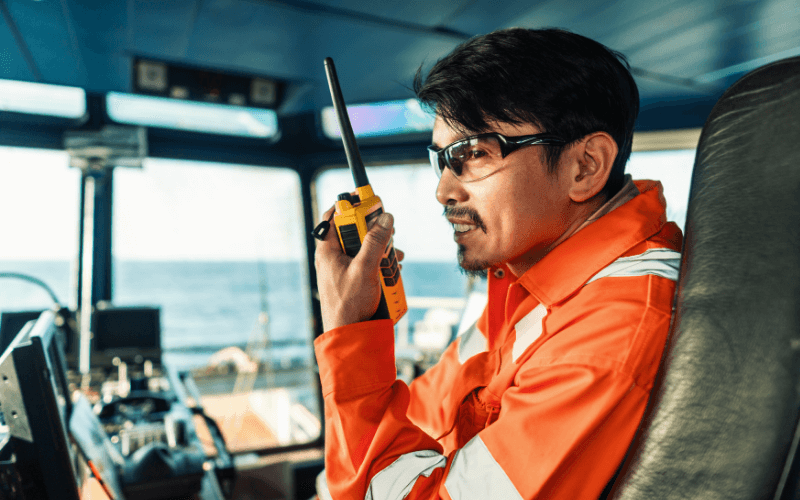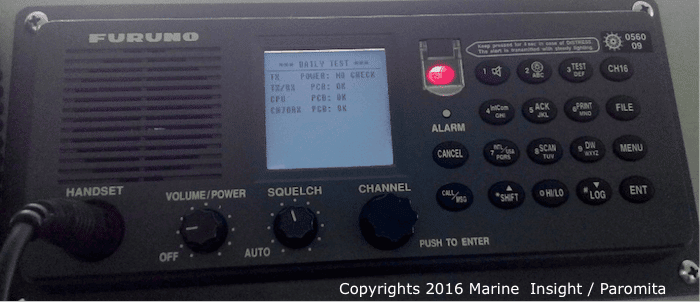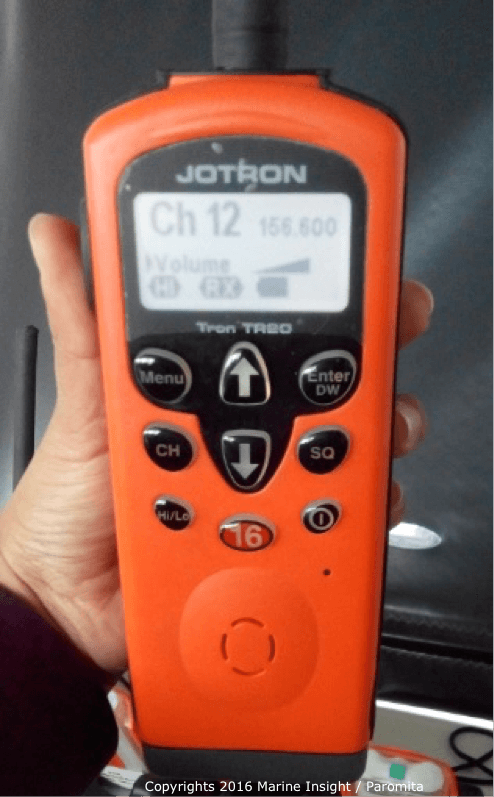Introduction to GMDSS
During the eighteenth hundred, the ships sailing in international and coastal waters were dependent on the Morse code to send any kind of distress signal to a coastal agency or ships in the nearby vicinity during an emergency .
Since it was a transmission of texture data using tones or lights, this kind of message was never very clear to understand what kind of emergency onboard ships .
therefore, an internationally agreed condom operation was adopted by IMO under SOLAS chapter IV which is known as GMDSS- Global Maritime Distress Safety System .

GMDSS and its Uses
On 1st Feb 1999, the amply implemented GMDSS came to picture. It was a located standard for use of communication protocol, procedures and safety equipment to be used at the time of distress site by the embark .
Under GMDSS, all the passenger ships and cargo ships above 300 GT involved in the voyages in external waters have to carry equipment as per GMDSS .
Read – > SOLAS requirements for GMDSS

When a transport uses GMDSS, it basically sends a distress signal via a satellite or radio communication equipment. It ’ south besides used as a medium for sending or receiving maritime safety information and cosmopolitan communication transmit .
Read – > Daily, Monthly and Weekly Tests Of GMDSS equipment on circuit board Ships
In the GMDSS model, there are different Sea Areas to allot the cultivate equipment in the respective area. They are as follows :
| AREA | RANGE | EQUIPMENT |
| A1 | 20 to 50 M | VHF DSC |
| A2 | 50 to 400 M | VHF + MF |
| A3 | 70° N to 70° S | VHF + MF + One INMARSAT |
| A4 | Above 70° N or S | HF + MF + VHF |
To understand the above table further, the following are the ranges with regard to the frequencies in a specific band :
- Medium Frequencies: 300 KHz to 3 MHz
- High Frequencies: 3 MHz to 30 MHz
- Very High Frequencies: 30 MHz to 300 MHz
Very High Frequencies (VHF)
For the purposes of maritime communication, the range of 156 MHz to 174 MHz is allocated. Channel 16, which is set at 156.800 MHz, is for Distress, Urgency and Safety communication. Channel 70, set at 156.525 MHz, if for act VHF DSC ( Digital Selective Calling ) watch .
GUARD channels are set put above and below Channel 16 to avoid any hindrance on Channel 16. One can not have seamless traffic on Channel 16 with intervention with respect to other communication aside from distress, safety and urgency. So the Guard channel frequencies are 156.775 MHz and 156.825 MHz .
Among early things, the VHF set runs on a 24 Volt DC supply with J3E character of transmission for Radiotelephony and G2B type of transmission for VHF DSC .
The different elements of GMDSS are as follows:
- INMARSAT: It is a Satellite operated system that includes ship earth station terminals – Inmarsat B, C and F77. It provides telex, telephone and data transfer services between ship-to-ship, ship to shore, and shore to ship along with a priority telex and telephone service connected to shore rescue centres.
- NAVTEX: NAVTEX is an internationally adopted automated system which is used to distribute MSI-maritime safety information, and includes weather forecasts and warnings, navigational warnings, search and rescue notices and other similar safety information.
- Emergency Position Indicating Radio Beacon (EPIRB): EPIRB is equipment to help determine the position of survivors during a SAR operation. It is a secondary means of distress alerting. Read about EPIRB here.
- Search and Rescue Locating Equipment: Primarily the Search and Rescue Radar Transponder. This is used to home Search and Rescue units to the position of distress which transmits upon interrogation. Read about Search and Rescue equipment here.
- Digital Selective Calling (DSC): This is a calling service between ship to ship, ship to shore or vice versa for safety and distress information mainly on high or medium frequency and VHF maritime radio.
Documents to be carried onboard with regard to GMDSS:
- Ship’s Radio License
- Radio Operators Certificates
- Safety Radio Certificate
- GMDSS Radio Log Book
- ITU List of Cell Signs and Numerical Identities of Stations used by Maritime Mobile and Maritime Mobile Satellite Services
- ITU List of Coast Stations
- ITU List of Ship Stations
- ITU List of Radio determination and Special Service Stations
- Antenna Rigging Plan
- Valid Shore Based Maintenance Certificate
GMDSS Training
The manage of GMDSS equipment requires certify train a well as license from the Telecommunication department of the department. The General Operators Certificate ( GOC ) is mandate in regulate for an officer to be allowed to handle GMDSS equipment onboard the ship.
Read more: Should You Buy CTRM Stock?
To obtain this GOC, a unretentive course is compulsory to attend following which an examination is conducted ( written and oral ), which needs to be cleared. This train is aimed at Cadets who ought to become license radio Operators to operate all the equipment in conjunction with the regulations laid out for GMDSS .
The prepare period is around 12 days and owing to the run being mandate, it is advised to call into an approved institute to record a seat for a future date, well in improvement. Depending on which country the individual is from, they must check the respective institute websites ampere well as the Ministry of Shipping ( or whichever applicable for their country ) web site to get the fully details on eligibility and criteria for admission into the GMDSS path .
Over the period of the course, the military officer is taught about the diverse aspects of GMDSS ranging from Radio Log to sending INMARSAT messages and all such aspects of it which will be required when carrying out communication onboard. The written examination tests the theory whereas the oral examination is a one on one school term with a surveyor who tests the person on the different aspects of GMDSS, covering the whole course of study ( theory vitamin a well as practical ) .
Recommended GMDSS Books:
GMDSS – A Guide For Global Maritime Distress Safety System
GMDSS – A User’s Handbook
Admiralty List of Radio Signals (ALRS) Volume 5: GMDSS
NP285 or ALRS Vol. 5 is the issue with across-the-board information in hypothesis a well as practical use for all things pertaining to the GMDSS. correction for this is found in Section 6 of the weekly Notices To Mariners ( TNM ). Its contents cover as follows :
- Distress Communication And False Alert
- Operation Procedure For Use Of DSC Equipment
- Search And Rescue Transponder
- Extract From ITU Radio Regulations
- VHF DSC List Of Coast Stations For Sea Area A1
- MF DSC List Of Coast Stations For Sea Area A2
- HF DSC List Of Coast Stations For Sea Area A3
- INMARSAT
- Maritime Safety Information (MSI)
- SafetyNet
- NAVTEX
- Distress, Search And Rescue
Portable Marine Radio
The portable marine radio or the survival craft transceiver, a very important chemical element of the GMDSS, is a piece of equipment located in the bridge in encase the ship ’ second personnel have to board the survival trade but they may be used for communication on board as well .

In case it ’ s used in an emergency, it is used for on-scene coordination between the survival craft and the search and rescue units. The IMO requirements for the survival craft transceivers are as follows :
- Can be operated by unskilled personnel
- Transmission and Reception on 156.8 MHz (Channel 16) and 156.3 MHz (Channel 6)
- Withstand a drop of 1 meter
- Watertight to a depth of 1 meter for 5 minutes
- Minimum power of 0.25 watts
- A power reduction switch available
- The antenna must be omnidirectional and vertically polarized
- Battery power capacity for 8 hours (Nickel Cadmium or Lithium Battery)
The scope of GMDSS is huge and extensive read on it, through publications and manuals and all other available means is the alone means to get better at handling the equipment and gain far cognition about the setup .
Being a mandate frame-up onboard ships which is besides the key setup with respect to emergency situations, it is actually in egoism for the ship ’ s officer to gain maximal know-how on every expression of the GMDSS .
You might also like to read:
Read more: Maritime search and rescue – Documentary
Disclaimer: The authors ’ views expressed in this article do not necessarily reflect the views of Marine Insight. Data and charts, if used, in the article have been sourced from available data and have not been authenticated by any statutory authority. The generator and Marine Insight do not claim it to be accurate nor accept any duty for the like. The views constitute lone the opinions and do not constitute any guidelines or recommendation on any course of action to be followed by the reader .
This post may contain affiliate links, meaning we get a small commission if you decide to make a purchase through our links, at no extra cost to you. You can read our full disclaimer here .
The article or images cannot be reproduced, copied, shared or used in any form without the permission of the author and Marine Insight.
